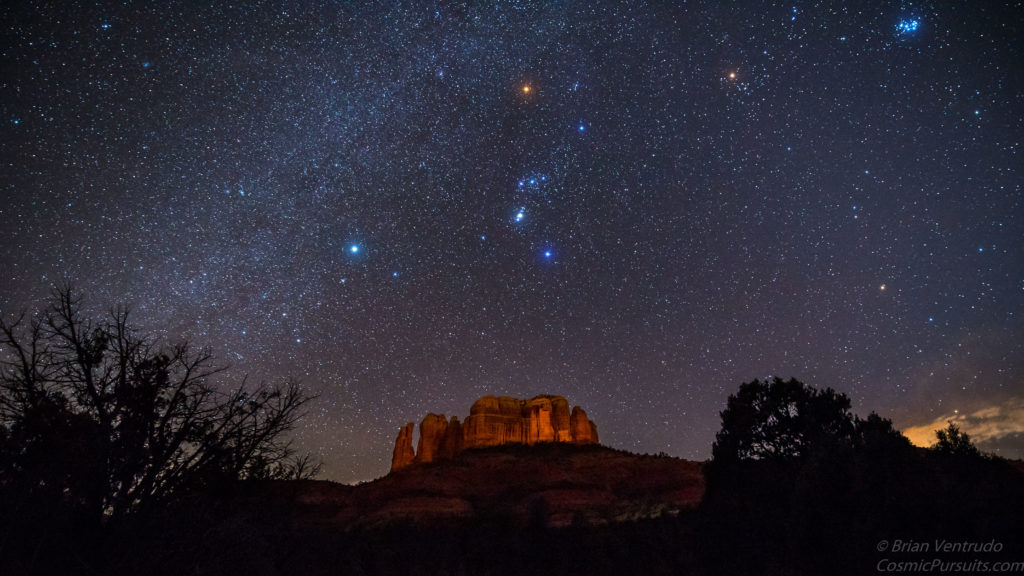
Happy New Year! As 2023 gets underway, four bright planets lie in the evening sky, Mars high up in Taurus with Jupiter, Venus, and Saturn further towards the horizon. Brave the cold on January 4 to spot a few Quadrantid meteors before dawn. Observers in Polynesia, Mexico, and the U.S southwest see the Moon occult Mars on Jan. 30th. And wherever you are, take in the bright and beautiful stars of this season and resolve in this new year to never let a clear sky go to waste. Here’s what to see in the night sky this month!
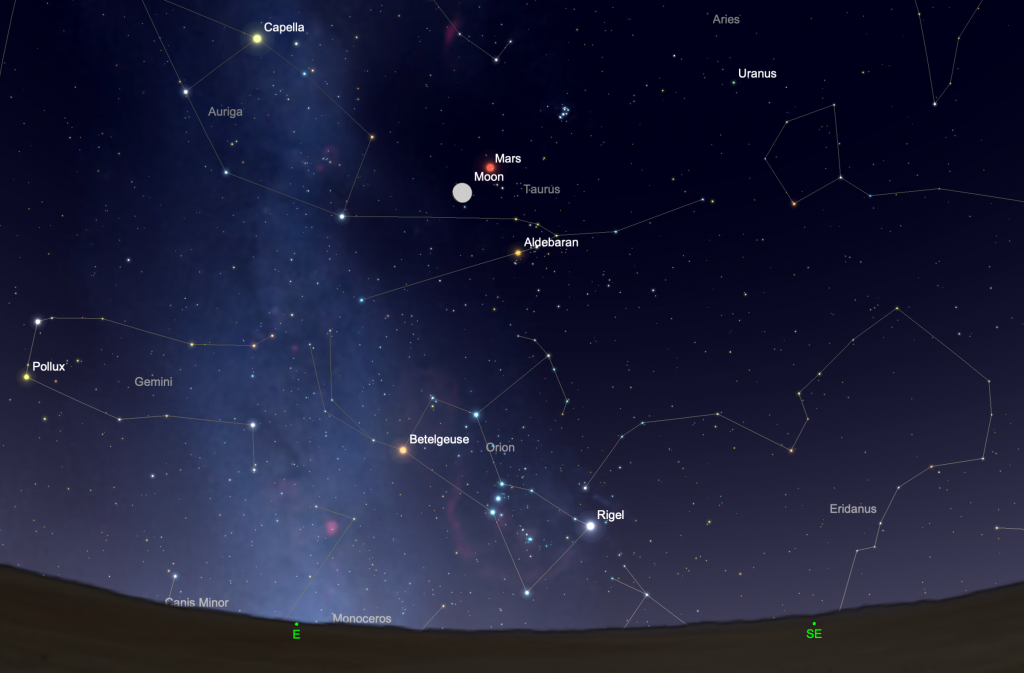
3 January 2023. A fattening Moon lies near still-bright Mars and the orange star Aldebaran in Taurus. The Red Planet shines at magnitude -1.2 with a disk about 14” across. The planet still lies close enough to reveal detail in a telescope in steady air, but it begins to shrink quickly during January and shines at magnitude -0.3 by the end of the month.
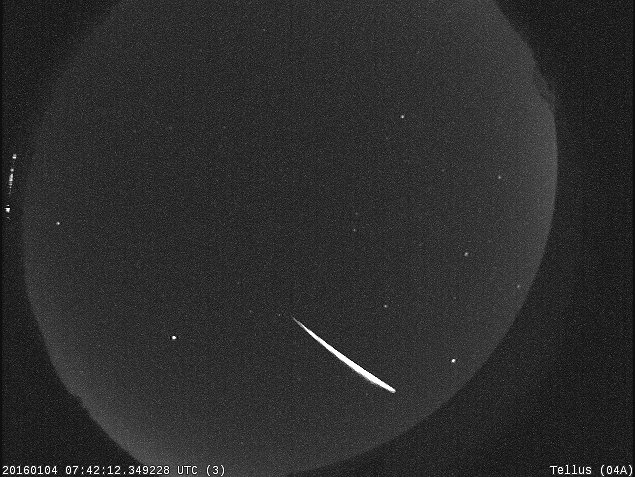
3-4 Jan. The brief but sometimes intense Quadrantid meteor shower peaks. The Quadrantids average about 25-40 meteors in dark sky. The predicted time of the peak of the shower is 3h Universal Time on January 4. But look anytime on the night of the 3rd and into the early morning of the 4th, especially in the morning when the radiant is higher in the sky. The Quadrantids take their name from the defunct northern constellation Quadrans Muralis. They can appear anywhere in the sky, but the radiant lies just north of the bright star Arcturus in the northeastern sky in the pre-dawn hours or just over the north-northwestern horizon after evening twilight when the nearly-full Moon gets out of the way. The shower strongly favors northern-hemisphere observers.
4 Jan. Earth lies at perihelion, its closest point to the Sun at a distance of 147,098,925 km.
6 Jan. Full Moon, 23:08 UTC.
6 Jan. The full Moon forms a tidy little triangle with Castor and Pollux, the two bright stars in Gemini.
7 Jan. Mercury reaches inferior conjunction with the Sun.
10 Jan. The waning gibbous Moon sits about 4o from Regulus in Leo in the early-morning hours.
12 Jan. Mars reaches its stationary point and now begins prograde motion eastward from night to night against the background stars. The planet still lies in Taurus near the Pleiades and Hyades star clusters.
15 Jan. Last Quarter Moon, 02:10 UTC
16 Jan. The thinning Moon lies about 6o from Spica in Virgo before dawn.
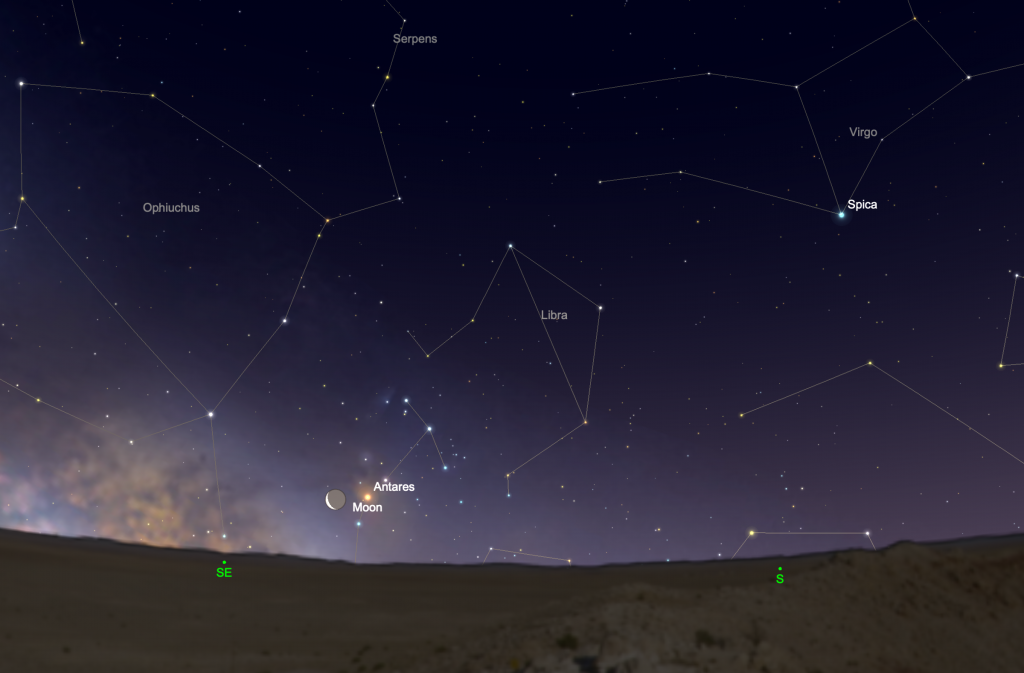
18 Jan. Antares, the bright red-orange supergiant at the heart of Scorpius, reappears low in the southeastern sky before sunrise. Today it’s joined by a thin waning crescent Moon.
21 Jan. New Moon, 20:53 UTC
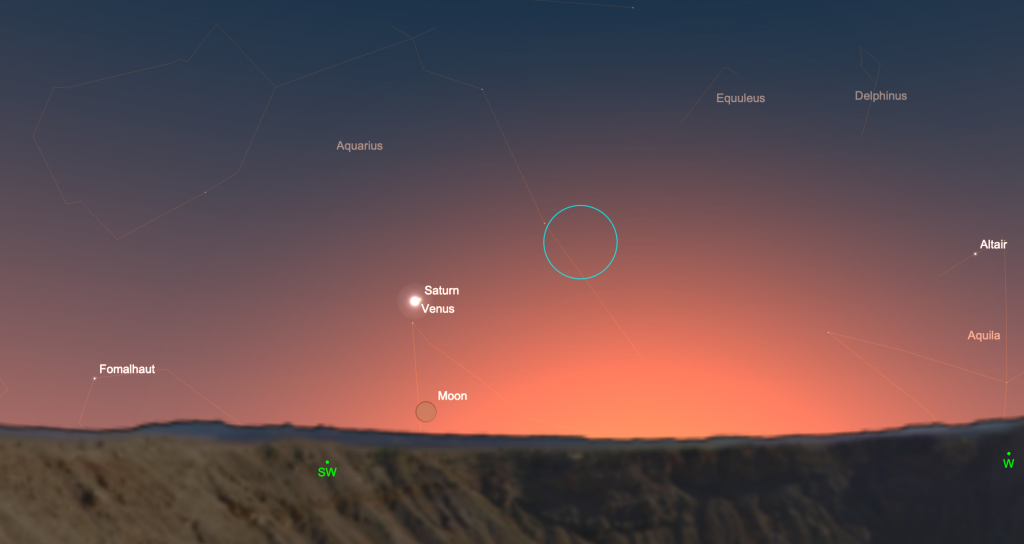
22 Jan. Grab a pair of binoculars to see Venus and Saturn just half a degree apart low in the southwest after sunset. You need a clear view of the horizon to spot the pair as they emerge in the twilight. A small telescope still shows Saturn’s rings, if little else with a disk about 15” across, while the 10”-wide disk of far-brighter Venus appears almost fully illuminated
23 Jan. Look for Venus about 3o north of a slender Moon in the southwest.
25 Jan. The waxing crescent Moon lies near Jupiter in the southwest after sunset.
25 Jan. Jupiter lies about 2o north of the thick crescent Moon in the southwest. The planet shines at an impressive magnitude -2.2 and spans about 37”. It’s always worth a look in a telescope.
28 Jan. First Quarter Moon, 15:19 UTC
28 Jan. The first-quarter Moon lies halfway between Mars and Jupiter.
28-29 Jan. Uranus lies less than a degree north of the Moon.
30 Jan. Mercury reaches greatest western elongation about 25o from the Sun. The planet, now at magnitude 0.0, lies low over the eastern horizon before sunrise for northern observers, but southern-hemisphere observers see the planet at a higher and more accessible altitude over the eastern horizon.
30-31 Jan. Mars lies very close to the gibbous Moon for observers in most of the world. But for observers in New Zealand, Mexico, northern South America, and the southwestern U.S., the planet passes behind the Moon at about 04:00 UTC.